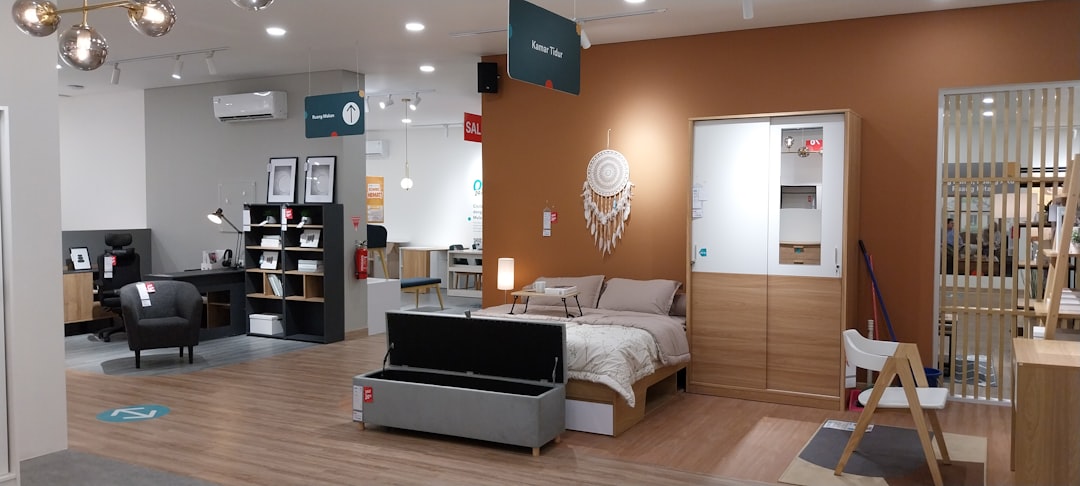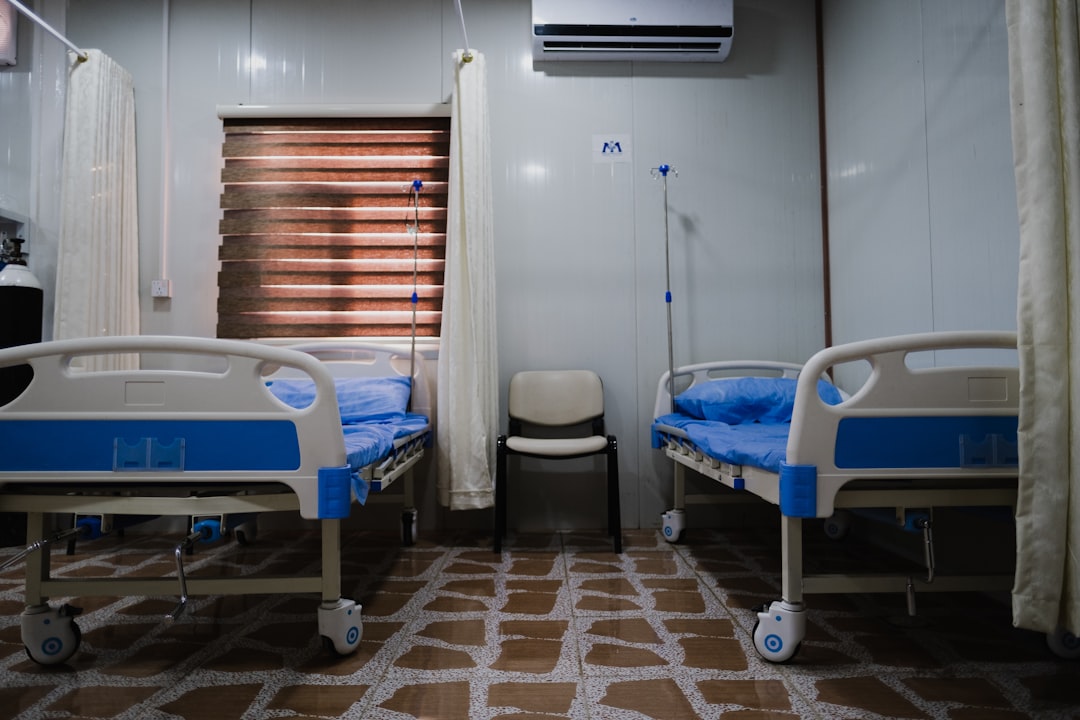

Engage prospects with a scan and streamline customer engagement with FREE QR code marketing tools by Sona – no strings attached!
Create a Free QR CodeFree consultation

No commitment

Engage prospects with a scan and streamline customer engagement with FREE QR code marketing tools by Sona – no strings attached!
Create a Free QR CodeFree consultation

No commitment
In today’s digitally driven world, QR codes have evolved from a novelty to a strategic powerhouse in bridging offline engagement with online action. For palliative care facilities, QR codes represent a seamless and effective way to collect real-time feedback from patients, families, and healthcare professionals. These tools help providers deliver higher-quality end-of-life care, improve patient experiences, and ensure continual service improvement without cumbersome paperwork or complex digital processes.
Gathering feedback in palliative care settings is essential for meeting regulatory requirements, addressing sensitive needs, and honoring the wishes of both patients and their loved ones. However, relying on manual surveys, printed forms, or verbal reports often results in missing essential perspectives. Incomplete and delayed feedback can create gaps in care, missed opportunities to address concerns in real time, and increased administrative burden that ultimately affects patient satisfaction, family trust, and compliance with guidance like the palliative care toolkit.
By introducing QR codes as a feedback tool in palliative care facilities, providers can address the persistent challenges of fragmented feedback and disconnected systems. QR codes enable streamlined, timely feedback collection, foster better engagement across hospice and related settings, and unlock actionable insights for quality assurance and individualized care without disrupting the sensitive dynamics of end-of-life care environments. With thoughtful implementation, QR codes can make space for quieter voices to be heard while giving clinical leaders the data they need to improve care, supported by this research study.

Palliative care facilities often struggle to capture feedback efficiently, particularly when busy staff must rely on paper forms or ad hoc conversations. These outdated workflows can result in missed, unstructured, or delayed feedback that fails to drive timely action. Digital surveys accessed via QR codes bridge the gap between physical touchpoints and digital outcomes, creating a consistent, on-demand way for patients, families, and staff to share experiences that inform better care. For fast setup, route scans to concise mobile forms using Google Forms QR codes.
Start by mapping the moments that matter across the care journey: admission, care conferences, symptom management changes, visiting hours, discharge, and bereavement follow-up. Then decide where QR codes can make sharing feedback easy and respectful. The most effective campaigns reduce friction. They present a clear, compassionate call to action and use short, adaptive forms that honor people’s time and emotional context.
When QR feedback becomes part of routine communication, trust grows. Families see that their input leads to visible improvements, and staff benefit from structured, actionable data that helps them deliver compassionate care consistently.

Palliative care teams confront unique challenges in capturing comprehensive, timely feedback. Traditional methods such as printed surveys or verbal comments often leave valuable insights unstructured and difficult to analyze. Without a central, real-time stream of feedback, leaders miss patterns and are forced into reactive rather than proactive improvements. QR codes close these gaps by linking bedside experiences to digital tools that collect, organize, and route feedback where it can make a difference.
This approach is particularly important in sensitive clinical contexts. Patients and families may feel more comfortable sharing personal concerns on their own devices, at their own pace, and in their own language. QR codes make that possible without requiring an app download or separate technology onboarding. They also offer a path to track participation and outcomes across settings such as inpatient hospice, home-based palliative care, and supportive care programs.
For palliative care, these capabilities translate into tangible benefits. Facilities can detect emerging pain points sooner, respond to family concerns more effectively, and document quality for regulatory and accreditation needs without placing extra strain on caregivers.

Palliative care settings are full of printed materials and personal interactions that can benefit from a quick bridge to digital experiences. Selecting the right QR code format for each use case ensures smooth participation and accurate measurement. While a simple web link is often enough, other formats can better support contact sharing, network access, or direct messaging.
Choosing the right destination is just as important as the format. The best experiences guide people to short, mobile-optimized forms or resources that match their specific context. Whenever possible, use dynamic codes so you can update destinations without reprinting and tailor content to language or role.
Dynamic QR tools such as Sona QR let you manage all formats in one place, switch destinations as needs change, and run A/B tests on different prompts to improve engagement.

Palliative care experiences are shaped by many small moments. Feedback captured at these moments reveals actionable insights that might otherwise be missed. The key is to place QR codes where patients, families, and staff naturally pause and are most prepared to share their perspective.
Look for transition points and high-traffic zones. Aim for visibility without intrusion. Always pair codes with compassionate language that sets expectations and explains why feedback matters. Two or three thoughtful placements in each unit will often outperform a dense scattering of codes.
When you optimize these placements and align them with clear calls to action, feedback volumes increase and the quality of insights improves. Over time, your facility builds a responsive loop where experiences inform improvements and improvements strengthen trust.
QR codes are most effective when they are applied to specific, recurring interactions. In palliative care, the following use cases deliver strong results: they improve data quality, speed up responses, and reduce administrative effort while respecting the emotional context of care.
Create lightweight workflows for each use case so staff know how to encourage participation, how to handle urgent signals, and how to close the loop with families. This consistency makes the program feel reliable and compassionate rather than transactional.
For each use case, set a few targeted metrics such as scan-to-completion rate, average response time, number of urgent tickets generated, and time-to-resolution. These help you measure impact and refine over time.
Each QR scan carries valuable context: who scanned, where they were, what they needed, and when they engaged. By deploying multiple codes at different touchpoints, you can segment audiences automatically and tailor follow-up communication. In palliative care, thoughtful segmentation allows you to respect roles and preferences while providing the right resources at the right moment.
Begin by distinguishing between patients, family caregivers, and staff. Then layer in care settings such as inpatient unit vs home hospice, visit timing such as weekday afternoons vs late evenings, and event types such as care conferences or bereavement sessions. This context helps you send relevant, supportive follow-ups rather than generic messages.
Segmented audiences let you tailor messages with care. Families who scanned a discharge survey can receive a gentle reminder about support groups. Staff who reported equipment issues can be updated when replacements arrive. Over time, your communication becomes more personal, timely, and trusted.
Palliative care communication spans printed guides, signage, websites, emails, and support groups. QR codes unify these channels by making each printed touchpoint interactive and measurable. The result is a connected experience where people can move from reading to acting in a single scan, and your team can understand which materials are truly helping.
To maximize impact, align QR initiatives with your existing materials and routines. Standardize visual design, use consistent calls to action, and maintain a central dashboard for tracking. Integrating with a platform like Sona QR simplifies management across departments and locations.
A centralized platform allows you to manage all codes, monitor performance, and sync data with your CRM and EHR tools. This keeps communication consistent and turns every channel into a source of insight. Learn more on Sona QR.
Clarify what you want to accomplish and why it matters. In palliative care, common goals include improving bedside communication, increasing family participation in care planning, surfacing staff workflow issues, or ensuring timely bereavement support. Align your goals with regulatory requirements and quality measures so your program supports both compassion and compliance.
Translate each goal into a few measurable outcomes. For example, you might aim for a 30 percent increase in family survey completions during the first month, a 48-hour maximum response time to urgent feedback, or a reduction in unresolved comfort concerns within a week. Grounding your work in metrics helps you prove value and iterate with purpose.
Choose the QR format that matches your goal. Web-link codes work for most survey and resource destinations. SMS or email codes help with sensitive or urgent messages. vCards are ideal for directory cards or door signage where quick contact saves time and stress. For visitor connectivity, Wi-Fi QR codes remove login friction that can hinder participation.
Use dynamic QR codes whenever possible. They let you update destinations, run A/B tests, route by language or role, and collect analytics without reprinting. Static codes are fine for unchanging resources, but they limit your ability to learn and adapt in a fast-changing care environment.
Design QR assets for visibility, clarity, and compassion. Pair each code with a brief, benefit-focused call to action such as “Share your comfort needs in under 2 minutes” or “Request a follow-up call.” Use high-contrast frames, adequate white space, and scannable sizes. Include a small icon or short URL fallback for people who prefer typing.
Testing is essential. Scan each code on multiple devices, at different angles and distances, and in varied lighting. If posting in patient rooms, test from a seated or reclined position. If posting in family lounges, test from realistic standing distances. Make sure the destination content is mobile-optimized and takes less than two minutes to complete.
Place QR codes where they are most helpful and least intrusive. In rooms, bedside cards and table tents work well. In waiting areas, posters near seating spots are effective. At reception, small countertop signs can prompt quick check-ins about arrival experience. For staff, discreet placement in break rooms encourages candid input.
Consistency builds recognition. Use similar designs across units so families understand what to expect. Keep a placement inventory by location and owner, and refresh periodically to avoid sign fatigue. Rotating calls to action can also maintain interest.
Track scans, completions, and time-to-response. Segment by location, audience type, and time of day to spot patterns. Look for drop-off points in the survey and shorten or clarify questions as needed. Test different calls to action, placements, and visual treatments to see what resonates.
Turn insights into action. Route urgent concerns to on-call managers, share weekly summaries with unit leaders, and celebrate improvements with staff. Integrate with platforms like Sona QR to automate alerts, sync data to your CRM or EHR, and visualize trends across the patient and family journey.
Leading platforms support end-to-end workflows from code creation to analytics, reducing bottlenecks and ensuring your team can respond quickly when experience matters most.

Improvement efforts falter when they rely on incomplete or delayed data. QR-enabled tracking connects real-world experiences to actionable insights. By capturing scan activity, completion rates, and downstream actions, palliative care teams can identify where to intervene and how to document quality outcomes for internal leaders, payers, and regulators. For a measurement primer, see Sona’s blog post single vs multi-touch attribution models.
In this context, “revenue” often means sustaining operations through payer relationships, value-based incentives, philanthropy, and strong referral networks. Demonstrating timely response to feedback, higher family satisfaction, and improved care coordination can support reimbursement and accreditation while strengthening community trust.
Advanced solutions like Sona QR and Sona turn QR interactions into a source of truth for experience and performance. Your leaders gain a clear picture of what is working, where to improve, and how feedback efforts contribute to sustainable, high-quality care.
Many facilities launch QR initiatives but underuse the insights they collect. Expanding your program requires attention to workflow, training, and automation. The goal is to ensure that each scan has a meaningful path to impact. When staff understand the why and families see the results, participation grows.
Look beyond basic placements. Consider how QR codes can help with home-based care, volunteer coordination, or spiritual support. Creative use increases touchpoints without adding complexity, as long as the experience remains compassionate and optional. For workforce and outreach context, see this compassionate careers guide.
Creative examples include placing QR cards in comfort kits for home-based palliative care, putting QR stickers on bedside resource binders that link to spiritual care, and adding QR codes on the TV info channel to request a quiet-hour reminder. When feedback is closed-loop, intelligence-driven, and respectful, facilities can respond with both empathy and efficiency.
QR codes are increasingly recognized as a strategic asset in palliative care, addressing longstanding difficulties in collecting timely, actionable feedback at every step of the care journey. They transform every printed asset such as admission forms, patient guides, and signage into a digitally measurable touchpoint that invites participation without pressure.
By enabling real-time feedback and integrating with analytics and workflow tools, QR codes help facilities foster transparent, responsive communication and a truly patient- and family-centered environment. The result is a continuous improvement loop where voices are heard, issues are addressed quickly, and quality is documented clearly for stakeholders.
Palliative care facilities can use QR codes to modernize feedback collection, personalize follow-up, and streamline operations. Replace outdated analog methods and overcome the challenges of incomplete or delayed insights by implementing dynamic, trackable QR experiences. With platforms like Sona QR and Sona.com, you can create and manage codes centrally, automate alerts, unify data across systems, and demonstrate impact confidently. Start small with a few high-value placements, learn from the data, and scale thoughtfully to build a culture of compassionate, measurable improvement.
QR codes have revolutionized palliative care facilities by transforming traditional feedback collection into a seamless, real-time engagement tool. They empower caregivers and administrators to gather actionable insights directly from patients and families, enhancing the quality of care and patient satisfaction. Imagine instantly knowing which aspects of your service resonate most and addressing concerns promptly to create a more compassionate and responsive environment.
With Sona QR, you can easily create dynamic, trackable QR codes that update on the fly—no need to reprint materials. Every scan provides valuable data that helps you improve patient experience, optimize care delivery, and demonstrate your facility’s commitment to continuous improvement. Start for free with Sona QR today and turn every scan into meaningful feedback that drives better outcomes for your patients and your team.
Palliative care services including inpatient hospice, home-based palliative care, supportive care programs, and bereavement follow-up can use QR codes to collect feedback and improve care.
Choose a facility that uses modern, digital feedback tools like QR codes for real-time, anonymous, and easy feedback collection to ensure timely issue resolution and continuous quality improvement.
Benefits include improved patient and family engagement, faster response to concerns, reduced administrative burden, enhanced care quality, and stronger trust between families and providers.
Both share similar feedback needs, but palliative care feedback often spans broader settings such as home care and symptom management changes, while hospice feedback focuses on end-of-life inpatient and bereavement experiences.
Select facilities that prioritize measurable outcomes, use dynamic QR codes for flexible feedback collection, protect privacy, integrate feedback with clinical workflows, and demonstrate continuous quality improvement.
QR codes enable quick, on-demand digital surveys accessible via smartphones, reduce reliance on paper forms, allow anonymous responses, provide real-time data, and integrate with systems for timely action.
Effective placements include patient rooms, family lounges, reception areas, staff break rooms, admission and discharge packets, and bereavement materials to capture feedback at key moments.
Common formats include web links to surveys, vCards for contact sharing, SMS or email for sensitive feedback, Wi-Fi access codes, and app download links to support various engagement needs.
Facilities should use QR tools that allow anonymous submissions, capture non-identifying engagement data, use secure HTTPS links, and limit personally identifiable information unless secure authentication is in place.
Steps include defining feedback goals, selecting appropriate QR code types, designing and testing codes for clarity and accessibility, placing codes strategically, and tracking and optimizing responses.
Integration enables automated alerts for urgent issues, continuous tracking of feedback trends, personalized follow-up communication, and supports documentation for quality and reimbursement.
Important metrics include scan rate by placement, survey completion rate, average response time, volume of escalated issues, time to resolution, and shifts in satisfaction scores.
Facilities can use QR codes for home-based care coordination, volunteer engagement, spiritual support access, staff training, and event promotions while ensuring feedback remains compassionate and optional.
Train staff to naturally reference QR options, explain how feedback improves care, provide recognition for engagement, use compassionate calls to action, and ensure feedback is quick and respects emotional contexts.
QR codes support ongoing, varied feedback opportunities throughout the palliative care journey, including home care and symptom changes, whereas hospice care feedback focuses more on end-of-life and bereavement phases.
Use Sona QR's trackable codes to improve customer acquisition and engagement today.
Create Your FREE Trackable QR Code in SecondsJoin results-focused teams combining Sona Platform automation with advanced Google Ads strategies to scale lead generation

Connect your existing CRM

Free Account Enrichment

No setup fees
No commitment required

Free consultation

Get a custom Google Ads roadmap for your business






Launch campaigns that generate qualified leads in 30 days or less.
